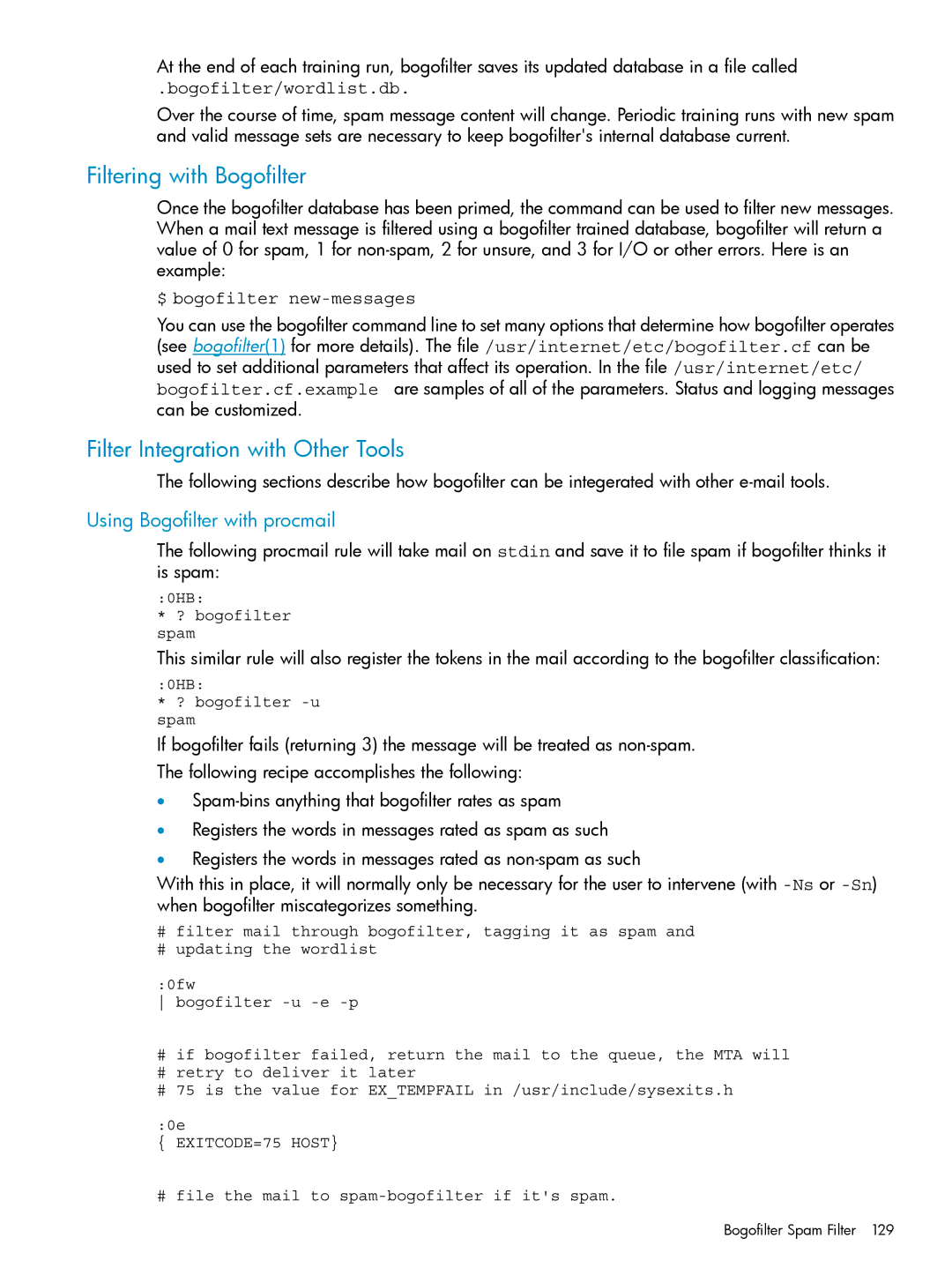At the end of each training run, bogofilter saves its updated database in a file called
.bogofilter/wordlist.db.
Over the course of time, spam message content will change. Periodic training runs with new spam and valid message sets are necessary to keep bogofilter's internal database current.
Filtering with Bogofilter
Once the bogofilter database has been primed, the command can be used to filter new messages. When a mail text message is filtered using a bogofilter trained database, bogofilter will return a value of 0 for spam, 1 for
$ bogofilter new-messages
You can use the bogofilter command line to set many options that determine how bogofilter operates (see bogofilter(1) for more details). The file /usr/internet/etc/bogofilter.cf can be used to set additional parameters that affect its operation. In the file /usr/internet/etc/ bogofilter.cf.example are samples of all of the parameters. Status and logging messages can be customized.
Filter Integration with Other Tools
The following sections describe how bogofilter can be integerated with other
Using Bogofilter with procmail
The following procmail rule will take mail on stdin and save it to file spam if bogofilter thinks it is spam:
:0HB:
*? bogofilter spam
This similar rule will also register the tokens in the mail according to the bogofilter classification:
:0HB:
*? bogofilter
If bogofilter fails (returning 3) the message will be treated as
The following recipe accomplishes the following:
•
•Registers the words in messages rated as spam as such
•Registers the words in messages rated as
With this in place, it will normally only be necessary for the user to intervene (with
#filter mail through bogofilter, tagging it as spam and
#updating the wordlist
:0fw
bogofilter
#if bogofilter failed, return the mail to the queue, the MTA will
#retry to deliver it later
#75 is the value for EX_TEMPFAIL in /usr/include/sysexits.h
:0e
{ EXITCODE=75 HOST}
# file the mail to
Bogofilter Spam Filter 129
